Search Images
Browse Content (p. 1128)
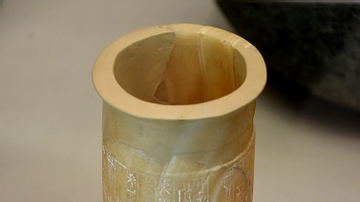
Image
Cylindrical Calcite Jar from Ur
This jar was dedicated to Shulgi, king of Ur III dynasty, by the priestess Shuqurtum. There are two incised channels at the upper half; between them, the cuneiform inscription was placed. The inscription also curses anyone who tries to deface...
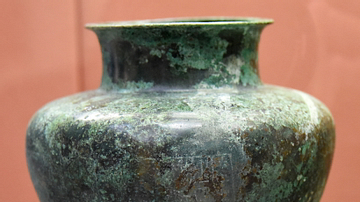
Image
Vase of Utu-Hegal of Uruk
This is only known bronze/copper alloy vessel inscribed with the name of Utu-Hegal, King of Uruk. Utu-Hegal was considered a hero, who drove the hated Gutian invaders out of Southern Mesopotmia. The inscribed cuneiform text mentions the name...
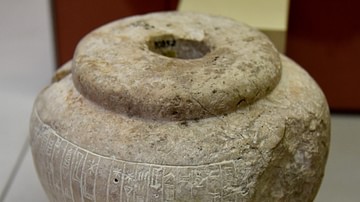
Image
Votive Head Mace of La-arab, King of Gutium
This partially mutilated head mace was inscribed with an Akkadian cuneiform script, which mentions that this stone head mace is a votive offering dedicated by La-arab, king of Gutium. Although they left little evidence of their rule, it appears...
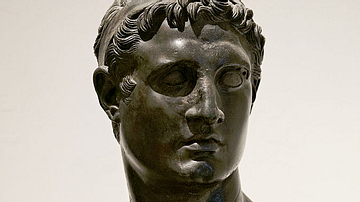
Image
Bronze Bust of Ptolemy II Philadelphus
This bronze bust is usually attributed to the Ptolemaic king Ptolemy II Philadelphus (r. 283-246 BCE) although alternative identifications of the bust have been made. It was discovered in the Villa of the Papyri, Herculaneum in 1754 CE and...
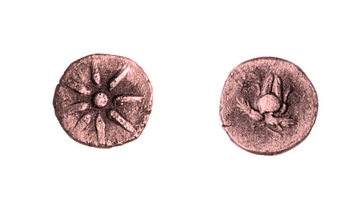
Image
Copper Coins Struck in Vani (Colchis)
Copper. The weights range: hemichalkon – 0,8 gr.-1,1 gr., chalkos – 1,2 gr.-2,1 gr. d=12-13/14-15 mm. for hemichalkon, d=11/13-16 mm. for chalkos. Obverse: Stylized effigy of lotus – Isis’ decoration. Reverse: Eight-pointed star...
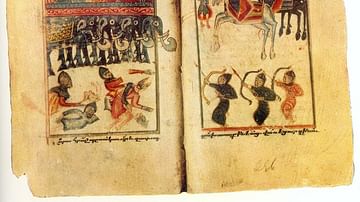
Image
Battle of Avarayr
A medieval manuscript depicting the battle of Avarayr between Armenians led by Vardan Mamikonian and the Sasanian Empire in 451 CE.

Image
Vardan Mamikonian
A modern medal depicting the Armenian general and leader of the Mamikonian dynasty Vardan Mamikonian who famously fell at the battle of Avarayr against the Sasanian Empire in 451 CE.
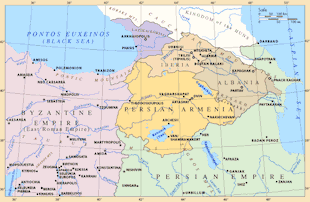
Image
Armenian Marzpanate
A map showing the territory of Persian Armenia, the Marzpanate, 387-591 CE.
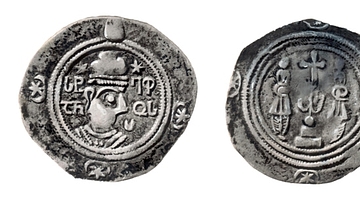
Image
Prince Stephanos I Coin
Kartli/Iberia coin of Prince Stephanos I, second emission. Silver. The weights range from 2,03 gr. to 3,02 gr. d = 25/26-28 mm. Obverse: shah/ruler to the right. Instead of Pehlevi, Georgian inscription (Asomtavruli) – ႱႲႤႴ/ႠႬႭႱ (Stephanos...
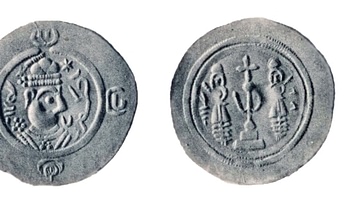
Image
Kartli/Iberia Coin of Prince Stephanos I
Kartli/Iberia coin of Prince Stephanos I, first emission. Silver. Weight – 2,9 gr. d=28mm. Obverse: Ohrmazd IV to the right. Legend in Pehlevi: hrm – aphzu (Ohrmazd Augustus). This is placed within onefold circle of the dots. Four Georgian...